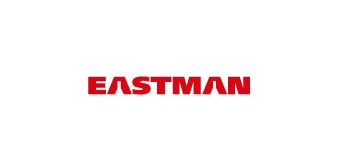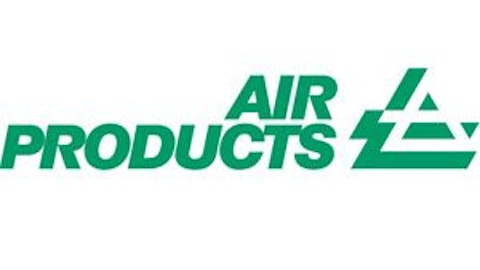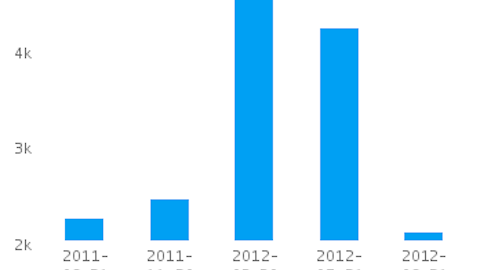
With a beta of 2.0, the company will definitely be able to capitalize on a global economic recovery. Eastman has shown positive performance thanks to a major acquisition and low raw material costs. Management now expects to earn $5.30-$5.40 per share for 2012, which is ahead of the consensus of $5.26 a share.
Eastman competes with the top two chemical companies in the U.S. The Dow Chemical Company (NYSE:DOW) is the largest American chemical company, and E I Du Pont De Nemours And Co (NYSE:DD) is the second largest U.S. chemicals manufacturer. Also worth noting is that both of these top chemical companies pay dividends that yield in excess of 4%.
Unlike Eastman, Dow Chemical saw lower than expected earnings estimates and lowered its full year guidance. Last quarter, the company posted EPS of $0.42, versus the same quarter a year ago of $0.62. The company did manage to see improvements in its agricultural and performance plastics segments. As well, the company plans to undertake various cost cutting initiatives to sustain earnings should a weak global economy continue. Among these include the recently announced closure of twenty manufacturing facilities and cutting of 2,400 jobs.
DuPont also announced lower than expected earnings for last quarter and a reduced full year EPS outlook, which drug the stock down 10% over the past week. The company posted EPS of $0.44, compared to $0.69 for the prior year. DuPont attributed the decline to volume decreases in performance chemicals and a slowdown in Asia, while Dow cited the slowdown in Europe as their biggest headwind.
Following the announcement, S&P lowered its recommendation on DuPont from buy to sell and placed a $41 price target on the company, where the company current trades around $45.25. The news comes even after the company’s effort to boost its cash business by selling off its performance coatings segment to the Carlyle Group for $4.9 billion back in August; check out our other thoughts on whether DuPont is a good buy.
Celanese Corporation (NYSE:CE) is another chemical producer, focused on industrials and engineered plastics. Sales are expected to fall 1% in 2012, with growth picking up in 2013, growing in the range of 5%-7%. The company’s 2013 growth should be driven by improvements in domestic manufacturing and a rise in engineered plastics used in North America’s auto industry. The company is also making trends in geographic expansion, but has more exposure to weakness in Europe and Asia given over 70% of its sales come from outside the U.S.
FMC Corporation (NYSE:FMC) is a diversified producer of industrial, specialty and agricultural chemicals. After an 8.4% rise in sales for 2011, the company is expected to grow sales another 10.5% in 2012. This chemical company is riding EPS growth that assumes the global farm economy will pickup and that Brazil will see more acreage planted as crops rise. The company has renewed its focus on the higher margin agricultural business, which should help it to see margin expansion in the future.
With Eastman coming off three straight quarterly EPS beats of 7.5% or more, we believe the company is showing positive signs of navigating a tough economic environment and might be ripe for buying. The company is expected to grow next year’s EPS by 18% and still trades at only 10x forward earnings.
Meanwhile, Celanese is also worth taking a look at. The company trades at industry low multiples, while also having some of the more robust growth prospects once global growth returns. Where the other chemical companies listed trade at average trailing P/E ratios of 18x, Celanese trades at a mere 10x earnings. Eastman and Celanese also trade at industry-low PEG ratios, both below 1.5.





